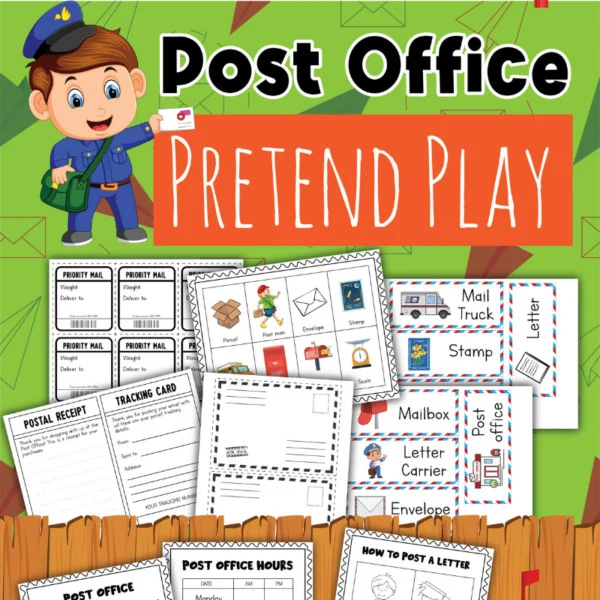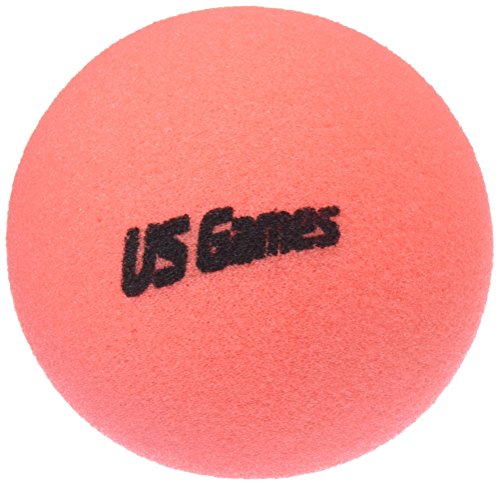The Bat The Ball activity is a simple yet profoundly effective game that engages children in dynamic play.
At its core, the game involves a child using a bat to hit a ball, aiming to control its direction and distance.
Doing this seemingly easy activity is super helpful for kids. It helps them develop in so many ways!

Skills Enhanced by “Bat The Ball” Activity
“Bat The Ball” enhances a child’s physical development. It promotes hand-eye coordination, as the child must accurately judge the timing and speed of the approaching ball to hit it effectively.
This activity also improves fine motor skills by handling the bat and gross motor skills as the child moves to strike the ball and perhaps chases after it.
Skills Enhanced By This Activity:
Beyond the physical, this activity plays a crucial role in cognitive development. It requires focus, concentration, and quick decision-making, challenging the child’s ability to process information rapidly.
Plus, it fosters spatial awareness, as the child learns to anticipate where the ball will land and how to position themselves accordingly.
Socially and emotionally, “Bat The Ball” can contribute significantly to a child’s growth. It teaches the values of patience, persistence, and resilience, as mastering the skill of hitting the ball consistently is not achieved overnight.
Playing with others encourages teamwork, turn-taking, and communication, providing a fun and interactive way to develop social skills.
As you can see, the “Bat The Ball” activity is more than just a game; it’s a comprehensive developmental tool that nurtures a wide array of skills in children.
Its importance in child development cannot be overstated, offering a foundation of physical, cognitive, and social abilities that benefit children far beyond the playground.
Real-life scenarios where the skills developed through “Bat The Ball” can be highly beneficial for children include academic settings, where hand-eye coordination and fine motor skills facilitate better handwriting and the use of scientific and mathematical instruments.
Cognitive skills such as focus and quick decision-making are crucial during test situations or while solving complex puzzles.
Spatial awareness is key in navigating crowded spaces or participating in team sports, where anticipating the movement of other players and the ball is essential.
Socially, the patience, persistence, and resilience gained from this activity equip children to handle peer interactions and challenges more adeptly, fostering a sense of empathy and cooperation.
Teamwork and communication skills developed during group play are transferable to collaborative projects in school, enhancing their overall ability to work well with others.
Materials Needed for “Bat The Ball” Activity
For a successful and engaging “Bat The Ball” activity, certain materials are crucial to ensuring the exercise’s effectiveness and the participants’ safety.
Here’s an overview of the required items, the rationale behind each, and suggestions for safe alternatives if necessary.
- Tennis Ball: A tennis ball is chosen for its moderate size and weight, making it easy for children to hit and catch without fear of injury. Its bright color also aids visibility, enhancing the child’s ability to track the ball in motion.
Alternative: If a tennis ball isn’t available, any lightweight softball, such as a foam ball or a rubber ball, can be used. These alternatives ensure safety and ease of use for children of all ages.
- String: The string is utilized to suspend the tennis ball at an appropriate height for batting. This setup helps refine the child’s hand-eye coordination by providing a moving target.
Alternative: If string isn’t available, consider using elastic bands or even a thin strip of fabric. These materials should be strong enough to hold the ball but flexible enough to allow it to move when hit.
- Small Button: A small button can be attached to the end of the string opposite the ball. This acts as a counterweight, making it easier to secure the string and ensuring that the ball hangs at the desired height.
Alternative: A small, soft bead or a piece of thick knot tied at the end of the string can replace the button as a safer option, especially for younger children. This reduces the risk of choking hazards.
- Plastic Bat: Plastic bats are preferred because they are lightweight and easy to handle for children. This encourages better control and coordination without the risk of injury from heavier bats.
Alternative: A sturdy cardboard tube or a rolled-up magazine can be used without a plastic bat. These safe, readily available options allow the child to practice hitting the ball effectively.
- Knife or Scissors: An adult initially needs these tools to carefully make a small hole in the tennis ball for the string and adjust the string’s length as required.
Alternative: To avoid using sharp objects, especially around children, consider pre-purchased balls designed for hanging, which might already include a loop or a less risky attachment method. Alternatively, adhesive hooks or tape can attach the string to the ball without making a hole.
Safety Note: An adult must supervise this activity’s setup, especially using a knife or scissors. Always prioritize the safety and suitability of all materials according to the age and capabilities of the child involved in the activity.

Instructions for “Bat The Ball” Activity
The “Bat The Ball” activity is a fantastic way to engage children in physical play while developing hand-eye coordination, timing, and motor skills.
Here are step-by-step instructions on conducting the activity, tips for setting it up, and suggestions to make it more challenging or fun.
Setup:
- Find a Suitable Tree Branch: Look for a sturdy tree branch that’s easily accessible and slightly above the child’s head when standing. Ensure the area around the tree is clear of obstacles to prevent accidents.
- Attach the Ball: Secure the ball to the end of the string. Then, tie the other end of the string around the chosen tree branch, adjusting so that the ball hangs at the child’s chest level. This setup allows the child to comfortably reach the ball with the bat without stretching or bending too much.
- Prepare the Bat: Provide the child with a lightweight plastic or foam bat that’s easy to hold and swing. Ensure the bat is the right size for the child, allowing them to grip it properly and swing easily.
Conducting the Activity:
- Demonstration: Begin by demonstrating how to stand and hold the bat, emphasizing a comfortable stance and proper grip at the top of the bat. Show the child how to swing the bat smoothly to hit the hanging ball.
- Practice Swings: Allow the child to practice swinging the bat a few times without hitting the ball. This helps them get used to the bat’s weight and the swinging motion.
- Hitting the Ball: Encourage the child to try to hit the ball with the bat. Remind them to keep their eyes on the ball and swing the bat through the ball’s path. Praising their effort and providing positive feedback to boost their confidence is essential.
- Catching Practice: If playing with multiple children, have one child bat the ball while another stands a safe distance away, ready to catch the ball. Remind the catcher to hold their hands as a target and watch the ball closely as it approaches them.
Making It More Challenging or Fun:
- Vary the Height: Shorten or lengthen the string to adjust the height of the ball. This encourages the child to adapt their swing and can help develop their ability to hit targets at different levels.
- Increase the Speed: Gently push the ball to give it some movement before the child tries to hit it. This adds extra difficulty and can help improve their timing and coordination.
- Add a Score System: Introduce a simple scoring system where points are awarded for each successful hit or catch. This can add a competitive element to the activity, making it more engaging for the children.
- Rotate Roles: If playing with multiple children, rotate roles regularly so that each child gets a chance to bat, catch, and even be the one to swing the ball to introduce movement. This variety keeps the activity exciting and ensures all children are actively participating.
Following these instructions and incorporating the suggested tips, “Bat The Ball” can be a fun and rewarding activity that children will enjoy while benefiting physically and developmentally.
In addition to “Bat The Ball,” several other activities can significantly enhance a child’s gross motor skills and hand-eye coordination.
These activities promote physical development and encourage teamwork, problem-solving, and creativity. Here’s an introduction to a few of them:
1. Obstacle Course
An obstacle course is a versatile activity tailored to different skill levels and spaces. It involves setting up a series of challenges that children navigate through, such as crawling under ropes, jumping over hurdles, or balancing on beams.
How to Conduct:
- Use household items or outdoor objects to create a course.
- Demonstrate how to navigate each section before letting the children try.
- Encourage creativity by allowing children to suggest modifications or additions to the course.
2. Catch and Throw
This simple game improves hand-eye coordination and teaches the basics of catching and throwing. It can be played with different types of balls to vary the difficulty level.
How to Conduct:
- Start with a soft, large ball and have the participants stand at a short distance from each other.
- As skills improve, increase the distance between players or use smaller balls.
- Introduce variations like catching with one hand or clapping before catching to make it more challenging.
3. Jump Rope
Jumping rope is excellent for developing timing, rhythm, and coordination. With a long rope, it can be done individually or in groups.
How to Conduct:
- Begin with basic jumping and gradually introduce variations like double jumps, running in place, or criss-cross movements.
- Two people turn the rope for group activities while others jump in the middle.
- Set goals or challenges, such as consecutive jumps or jump tricks, to keep it engaging.
4. Hopscotch
Hopscotch combines jumping, balance, and aim. Players toss a stone into numbered squares and then hop through the sequence to retrieve it.
How to Conduct:
- Draw a hopscotch grid on the ground with chalk or use tape if indoors.
- Demonstrate how to toss the marker (stone or beanbag) into a square and then hop through the grid to pick it up.
- Encourage children to use one foot in single squares and side-by-side squares.
5. Balloon Volleyball
Balloon volleyball is a safe and fun way for children to learn the basics without a net or hard ball.
How to Conduct:
- Use a balloon as the ball and create a makeshift net with a string or ribbon.
- Divide children into teams and explain the basic rules of volleyball.
- Keep the balloon in the air as long as possible to practice hitting, serving, and teamwork.
Each activity strengthens gross motor skills and hand-eye coordination and fosters an environment of learning, growth, and fun.
Regularly incorporating such games into playtime allows children to develop essential physical and social skills enjoyably and engagingly.
Learning Printables and Activities
These are excellent resources for kids! They’ll love being a part of the learning process from start to finish.



More Child Development Articles:
We have a complete series around improving your child’s developmental skills. Some of these articles are:
- The Importance of Teaching Cause and Effect
- The Importance of Developing Listening Skills
- Straw Soccer Activity
- Developing Speaking Skills in Children
The game “Bat The Ball” is a total winner for kids. It’s a game-changer for developing their physical abilities and cognition. It helps them improve their gross motor skills, hand-eye coordination, timing, spatial awareness, and teamwork.
Plus, adjusting to different skill levels is super easy, so every kid can join in and feel like a champ. It’s a fundamental game that every kid should play.
Guys, you should try this activity with your kids. It’s fun to spend quality time together while improving your physical health and emotional connection.
By doing these things with your children, you can help them develop the skills and confidence they need to tackle any challenge that comes their way.
Remember, as with any developmental game, the key to this activity is to keep it fun and upbeat.
Encourage effort over perfection, and celebrate each child’s progress, no matter how small. Doing so will create an enjoyable learning environment that your children will look forward to participating in.
So, grab a bat and a ball, and enjoy the laughter, learning, and growth of playing “Bat The Ball.”
















